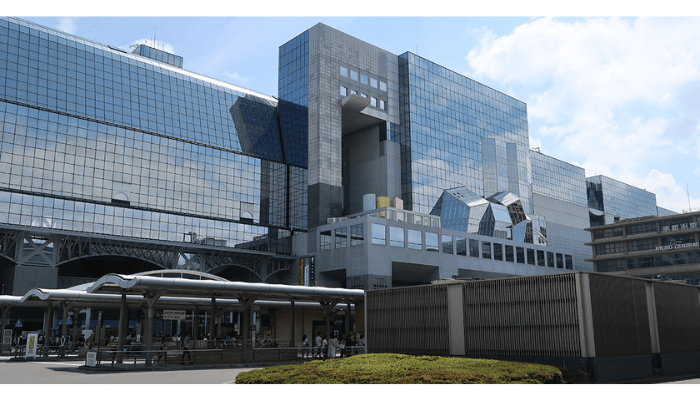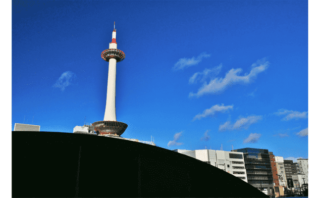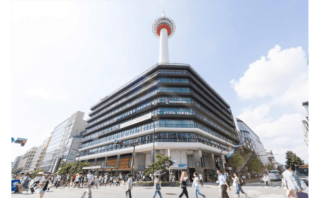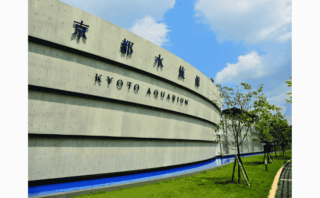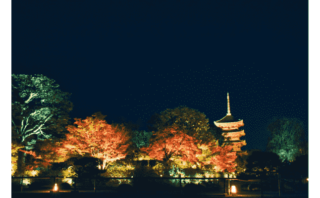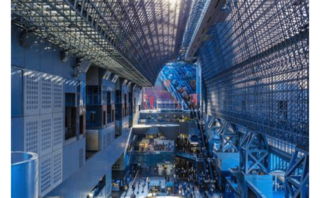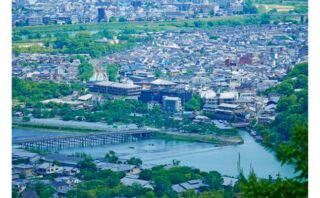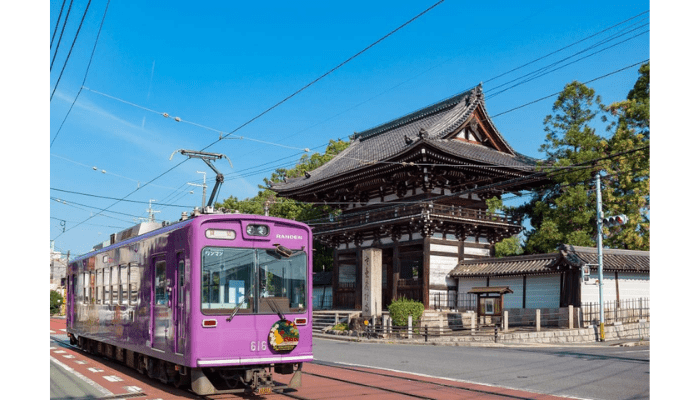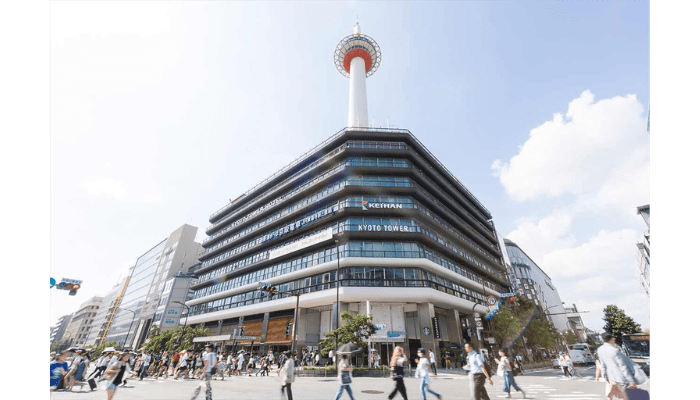Kyoto is one of Japan’s most famous tourist destinations, attracting visitors from all over the world. The city is home to countless temples and shrines, many of which are designated as Important Cultural Properties or National Treasures.
At the heart of Kyoto’s sightseeing is Kyoto Station, a major transportation hub with a large bus terminal and Shinkansen (bullet train) access. Surprisingly, the area around Kyoto Station offers a variety of attractions, including some hidden gems that are less well-known.
In this article, I’ll introduce 15 carefully selected spots that I personally explored on foot from Kyoto Station. Use this guide to plan your trip and make the most of your visit to the Kyoto Station area!
What Is Kyoto Like?

Kyoto Prefecture is located in the Kansai region of western Japan.
The most popular area for tourists is Kyoto City, centered around Kyoto Station. As the largest city in the prefecture, Kyoto City is home to 56% of the prefecture’s population.
Kyoto is not only a city where many people live but also a place with a well-developed public transportation system, making it easy to travel between tourist attractions.
For over 1,000 years, Kyoto served as the political and cultural center of Japan until the capital moved to Tokyo. This rich history is reflected in its many temples, shrines, and historical buildings.
Tourist Information Around Kyoto Station

The area around Kyoto Station serves as a convenient base for exploring Kyoto City.
You’ll find a wide range of accommodations near the station, from budget-friendly guesthouses to large hotels. For sightseeing, city bus and subway passes are highly recommended as they make getting around easy and affordable.
Kyoto Station and the city itself offer attractions that can be enjoyed year-round. In spring, you can admire cherry blossoms; in autumn, vibrant fall foliage; and in winter, serene snow-covered landscapes. Experiencing Kyoto’s seasonal beauty is one of its greatest charms.
Since Kyoto is located in a basin, summer temperatures can rise significantly. If you visit during this season, be sure to stay hydrated and dress in light, comfortable clothing.
Things to Do near Kyoto Station
The area around Kyoto Station is home to many popular tourist spots, yet it still retains a hidden-gem vibe compared to other parts of Kyoto. You can easily explore landmarks like Kyoto Tower, a symbol of the city, and Higashi Honganji Temple, the head temple of the Jodo Shinshu Otani Sect, all within walking distance.
1. Kyoto Tower

Located just a 1-minute walk from JR Kyoto Station, Kyoto Tower is a striking landmark that has been part of the city since its completion in December 1964. Interestingly, the tower features a unique monocoque structure with no steel framework.
Standing 131 meters tall, Kyoto Tower offers a variety of facilities, including an observation deck, restaurants, and even a public bathhouse. The tower’s design was inspired by the roof tiles of traditional Kyoto townhouses (machiya), representing waves, and it symbolizes a lighthouse illuminating Kyoto, a city without a sea.

The observation deck at the top is the tower’s highlight, offering panoramic views of Kyoto. Free binoculars are available to help you spot landmarks across the city. On clear days, you can even see as far as Osaka! At night, the tower transforms, offering a romantic view of the city’s illuminated streets.
There are also fun photo spots inside, including one with the tower’s adorable mascot, Tawawa-chan.

Relax at the Public Bathhouse “YUU”
If you’re staying at a guesthouse or hotel with only a shower, you’ll love Kyoto Tower’s underground public bath, “YUU,” which opens as early as 7 a.m. Relax in a spacious bath to unwind after a day of sightseeing.
Amenities such as towel rentals and toiletries like toothbrushes are available for purchase, making it a convenient stop for travelers.
Kyoto Tower
- Address: 721-1 Higashi Shiokoji-cho, Karasuma-dori Shichijo-sagaru, Shimogyo-ku, Kyoto
- Map: Google Maps
- Access: 2-minute walk from JR Kyoto Station
- Phone Number: +81-75-361-3215
- Closed: Open year-round
- Hours: 10:30 a.m. – 9:00 p.m. (Last entry: 8:30 p.m.)
- Admission: Adults ¥800, High school students ¥650, Elementary/middle school students ¥550, Children (age 3 and up) ¥150
- Official Website: Kyoto Tower
2. Kyoto Tower Sando

Just a 1-minute walk from JR Kyoto Station, you’ll find Kyoto Tower Sando, a shopping and dining complex located inside Kyoto Tower. Opened in April 2017, this modern facility offers everything from souvenir shops and gourmet food to hands-on workshops. Spread across three levels, it’s the perfect place to explore.
Each floor of Kyoto Tower Sando has its own unique theme:
- B1F: “Food & Relaxation” – A food hall with a variety of dining options.
- 1F: “Souvenirs & Shopping” – Shops selling local specialties and unique gifts.
- 2F: “Experience & Play” – Workshops and interactive activities.
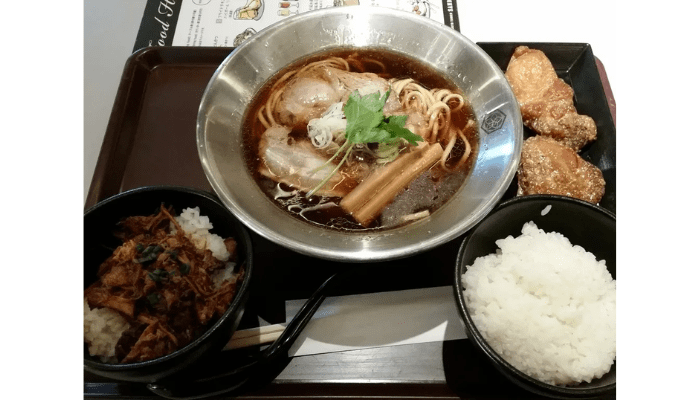
B1F: Food Hall – Discover a Variety of Tastes
The basement level features a lively food hall with more than 15 eateries, offering everything from Japanese, Western, and Chinese cuisine to desserts and bars. Most seating is open and shared, so you can choose your favorite food and enjoy it wherever you like.
One standout is Kyoto Senmaru Shakariki Murasaki, a popular ramen shop in Kyoto. Their rich and fragrant ramen and tsukemen (dipping noodles) are made with a flavorful seafood and chicken broth. A must-try dish is their signature soy sauce ramen, called “Za,” which perfectly blends the umami of seafood with the depth of chicken.

2F: Hands-On Experiences – Learn and Create
The second floor is dedicated to interactive activities, such as traditional craft workshops and Japanese sweets-making classes. Some shops also have photo-friendly spots where you can capture your memories.
Kyoto Tower Sando
- Address: 721-1 Higashi Shiokoji-cho, Karasuma-dori Shichijo-sagaru, Shimogyo-ku, Kyoto
- Map: Google Maps
- Access: 1-minute walk from JR Kyoto Station
- Phone Number: +81-75-746-5830
- Closed: Varies by store
- Hours:
- B1F: 11:00 a.m. – 11:00 p.m.
- 1F: 10:30 a.m. – 8:30 p.m.
- 2F: 10:30 a.m. – 7:00 p.m. (Some shops have different hours)
- Admission: Free (Some workshops may have fees)
- Official Website: Kyoto Tower Sando
3. Nishi Hongan-ji
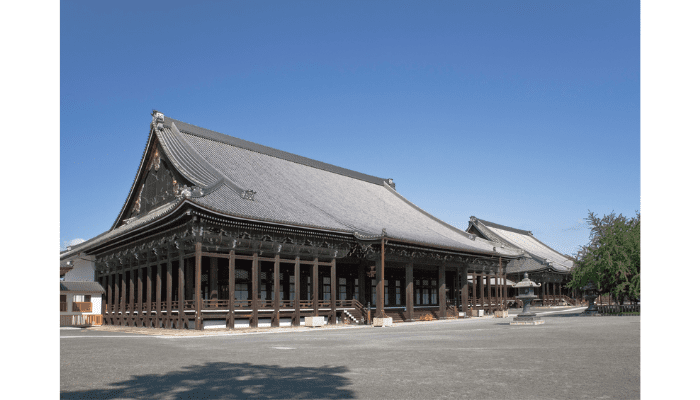
Located just a 10-minute walk from JR Kyoto Station, Nishi Hongan-ji is a vast temple complex loved by locals, who affectionately call it “Onishi-san.” It serves as the head temple of the Jodo Shinshu Hongwanji-ha school, founded by Shinran Shonin.
The temple grounds are designated as a National Historic Site and registered as a UNESCO World Heritage Site under the “Historic Monuments of Ancient Kyoto.”
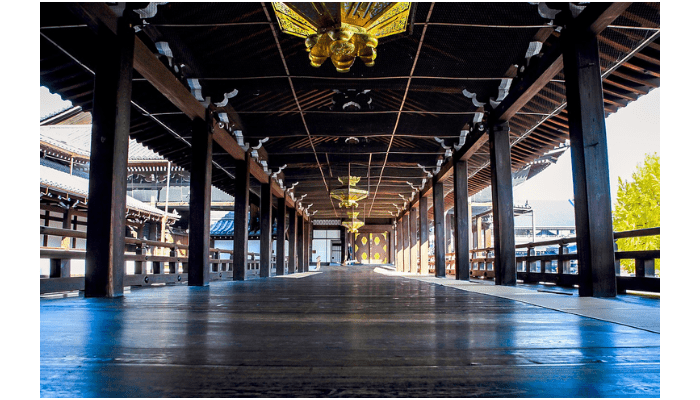
Goeido Hall: A National Treasure
The main hall, Goeido (Founder’s Hall), was rebuilt in 1636 and is a magnificent example of traditional Japanese architecture. Measuring 49 meters wide and 62 meters deep, the central area enshrines a wooden statue of Shinran Shonin.
Visitors can enter this National Treasure by removing their shoes and explore the hall’s interior, where the serene atmosphere reflects its historical significance. A charming corridor connects Goeido Hall and Amida Hall, showcasing the elegance of Kyoto’s temple architecture.
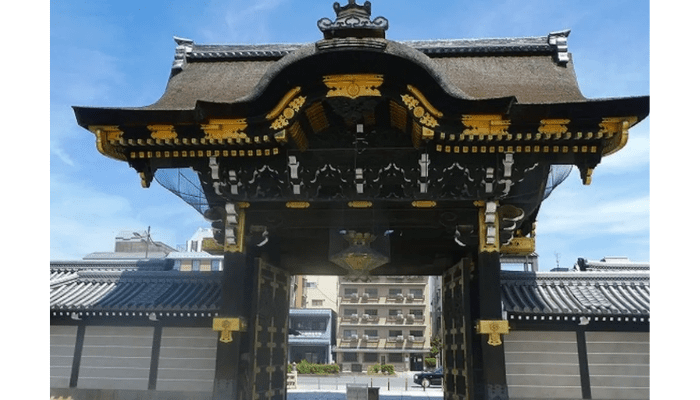
Explore the Historical Temple Grounds
Despite being so close to Kyoto Station, Nishi Hongan-ji feels like a tranquil escape. Visitors are greeted by the Goeido Gate and Amidado Gate, both designated as Important Cultural Properties.
One of the best parts of visiting Nishi Hongan-ji is that all the National Treasures and Important Cultural Properties within the grounds can be viewed free of charge.
Nishi Hongan-ji
- Address: 60 Monzen-cho, Shimogyo-ku, Kyoto
- Map: Google Maps
- Access: 10-minute walk from JR Kyoto Station / 11-minute walk from Nishihonganji Bus Stop
- Phone Number: +81-75-371-5181
- Closed: Open year-round
- Visiting Hours: 5:30 a.m. – 5:00 p.m.
- Admission: Free
- Official Website: Nishi Hongan-ji
4. Higashi Hongan-ji

Just a 7-minute walk from JR Kyoto Station, Higashi Hongan-ji is the head temple of the Jodo Shinshu Otani-ha school, founded by Shinran Shonin.
Since it’s only a 7-minute walk from Nishi Hongan-ji, it’s a great idea to visit both temples during your sightseeing trip.
Explore the Grand Temple Grounds
At the center of the temple grounds are two impressive halls: Goeido Hall, which enshrines an image of Shinran Shonin, and Amida Hall, dedicated to the principal Buddha.
The layout of the buildings is similar to Nishi Hongan-ji, as the two temples belong to the same Buddhist sect. Scattered throughout the grounds are historical structures showcasing intricate craftsmanship.
The stunning architecture, said to have influenced modern Japanese-style buildings, is astonishing in its precision and beauty, even centuries after it was constructed.
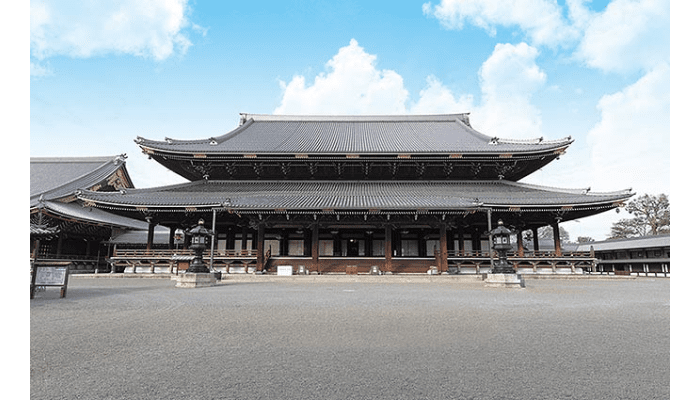
Goeido Hall: One of Japan’s Largest Buddhist Halls
At the heart of Higashi Hongan-ji is Goeido Hall, one of the largest Buddhist halls in Japan in terms of width and overall area. Inside, visitors can see a revered image of Shinran Shonin.
Although the hall appears to have two floors due to its double-layered roof, it is actually a single-story structure. Between 2004 and 2008, the hall underwent major restoration work, including the installation of tiles designed to better withstand the elements.
Registered as a Tangible Cultural Property, this hall leaves a powerful impression on all who visit.
Higashi Hongan-ji
- Address: 754 Tokiwacho, Karasuma-dori Shichijo-agaru, Shimogyo-ku, Kyoto
- Map: Google Maps
- Access: 7-minute walk from JR Kyoto Station
- Phone Number: +81-75-371-9181
- Closed: Open year-round
- Hours:
- March 1 – October 31: 5:50 a.m. – 5:30 p.m.
- November 1 – February 29: 6:20 a.m. – 4:30 p.m.
- Admission: Free
- Official Website: Higashi Hongan-ji
5. Shosei-en Garden

Just an 8-minute walk from JR Kyoto Station, Shosei-en Garden is a Japanese garden that belongs to Higashi Hongan-ji as an annexed site.
Despite its central location, Shosei-en is a hidden gem where visitors can relax and enjoy the beauty of nature, making it perfect for those seeking a quieter experience.
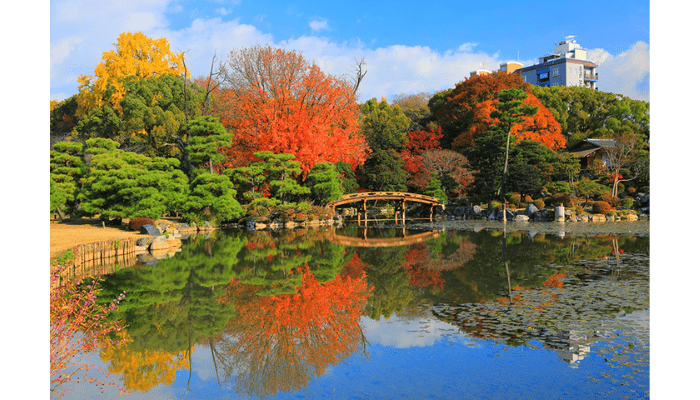
Discover the Beauty of Shosei-en
Spanning 30,000 square meters, the garden features seasonal flowers that create breathtaking scenery known as the “Thirteen Views”.
The garden was originally established in 1641 when the third Tokugawa shogun, Iemitsu, donated about 10,000 tsubo (approximately 33,000 square meters) of land. It was designed with the artistic input of Ishikawa Jozan, a renowned garden designer of the time.
In 1936, Shosei-en was designated as a National Scenic Spot. Within the grounds, you’ll find historic structures such as Rinchi-tei Pavilion and Enrin-do Hall, which add to the garden’s charm.
Upon entering, you’ll receive a detailed pamphlet that resembles a thick book. Use it as a guide to explore the garden at your own pace.
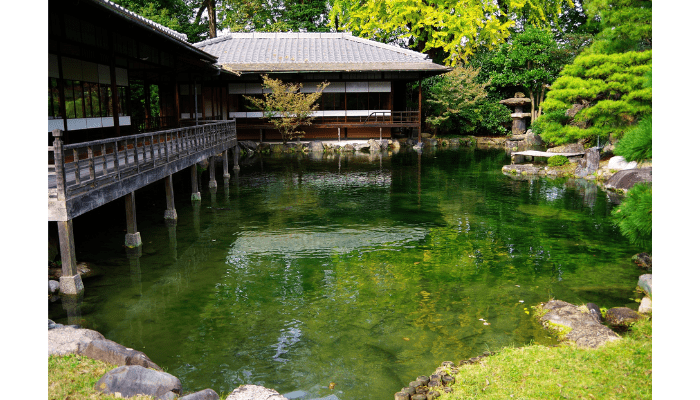
A Pond-Centered Strolling Garden
Shosei-en is a chisen kaiyu-shiki garden (pond-centered strolling garden), with the Ingetsu Pond as its focal point. The small islands around the pond are adorned with trees, offering ever-changing views depending on the season.
When I visited, the surface of the pond was covered with lush green leaves, creating a serene and picturesque atmosphere.
The garden features cherry blossoms, plum trees, and maple trees planted around the pond, offering a variety of seasonal colors. The expansive grounds do include areas with steps and uneven paths, so it’s best to wear comfortable shoes when visiting.
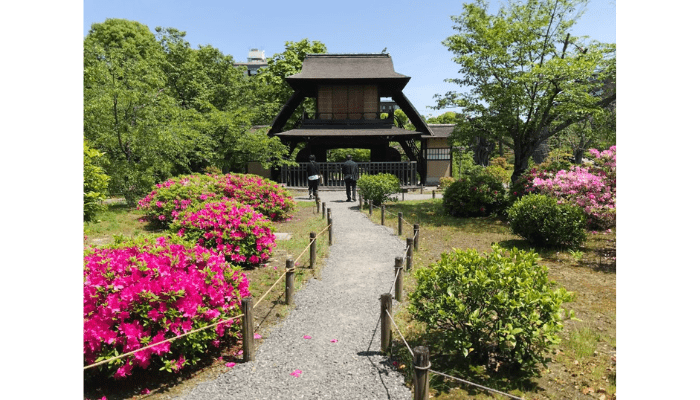
A Connection to “The Tale of Genji”
Shosei-en is also known as a site linked to The Tale of Genji. It is said that the location might have been home to a residence of the person who inspired Hikaru Genji, the protagonist of this classic Japanese literature.
In addition to its stunning scenery, the garden offers a glimpse into Japan’s rich history and cultural heritage.
Shosei-en Garden
- Address: Higashi Tamamizu-cho, Shimogyo-ku, Kyoto City
- Map: Google Maps
- Access: 10-minute walk from JR Kyoto Station
- Phone Number: +81-75-371-9210
- Closed: Open year-round
- Hours:
- March – October: 9:00 a.m. – 5:00 p.m.
- November – February: 9:00 a.m. – 4:00 p.m.
- Admission:
- Adults: ¥500
- Students (High school and younger): ¥250
- Official Website: Shosei-en
6. Kyoto Aquarium

Located about a 20-minute walk from JR Kyoto Station, Kyoto Aquarium opened in 2012 and is a must-visit spot for nature and aquatic life enthusiasts. Based on the concept of “Connecting Life with Water,” the aquarium is home to around 250 different species of marine creatures.
One of the highlights of Kyoto Aquarium is its focus on river ecosystems, inspired by Kyoto’s iconic rivers. It is also Japan’s first inland aquarium to use 100% artificial seawater, making it a unique attraction.
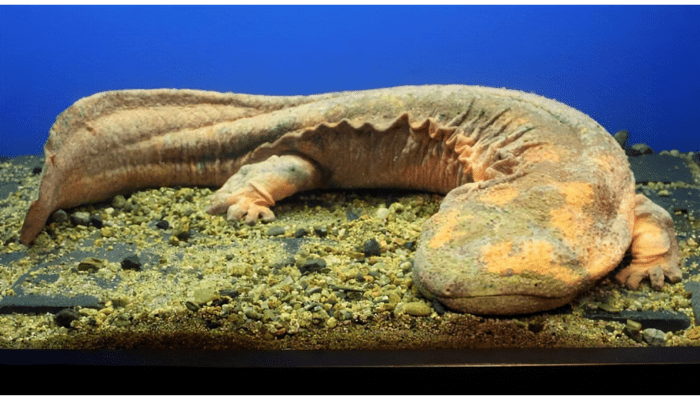
Must-See: The Giant Japanese Salamander
As you enter the aquarium, you’ll find the “Kyoto River Zone,” featuring animals that live along Kyoto’s rivers. The star of this exhibit is the Giant Japanese Salamander, designated as a special natural treasure. Known as the largest amphibian in the world, its slow, lumbering movements are both impressive and endearing. Kyoto Aquarium boasts one of the largest displays of Giant Japanese Salamanders in Japan, making it a highlight of your visit.

Another popular area is the “Kyoto Sea Zone,” which recreates Kyoto’s coastal waters using 500 tons of artificial seawater. The large tanks are filled with fascinating marine life, offering plenty of memorable sights.
Right outside the aquarium, you’ll find Umekoji Park, a spacious lawn area where kids can play. This makes Kyoto Aquarium a great destination for families with children.
Kyoto Aquarium
- Address: 35-1 Kankijicho, Shimogyo-ku, Kyoto (inside Umekoji Park)
- Map: Google Maps
- Access:
- 3-minute walk from “Shichijo-Omiya / Kyoto Aquarium Mae” bus stop
- 20-minute walk from Kyoto Station
- Phone: 075-354-3130
- Holidays: Open year-round (may close temporarily for maintenance or weather conditions)
- Hours: Check the official website for the latest schedule. Nighttime events may extend operating hours.
- Admission:
- Adults (including university students): ¥2,200
- High school students: ¥1,700
- Elementary & middle school students: ¥1,100
- Preschoolers (age 3+): ¥700
- Official Website: Kyoto Aquarium
7. Kyoto Railway Museum

Located just a 20-minute walk from JR Kyoto Station, the Kyoto Railway Museum is a must-visit for train enthusiasts. Opened in 2016 with the theme of “A hub for railway culture, connected to the community,” this museum offers interactive exhibits that are fun for both adults and children.
Explore the History of Japanese Railways
Spanning three floors, the museum showcases a variety of trains, including the famous Shinkansen (bullet trains) and historic steam locomotives. You’ll be able to see, touch, and even experience these trains up close.
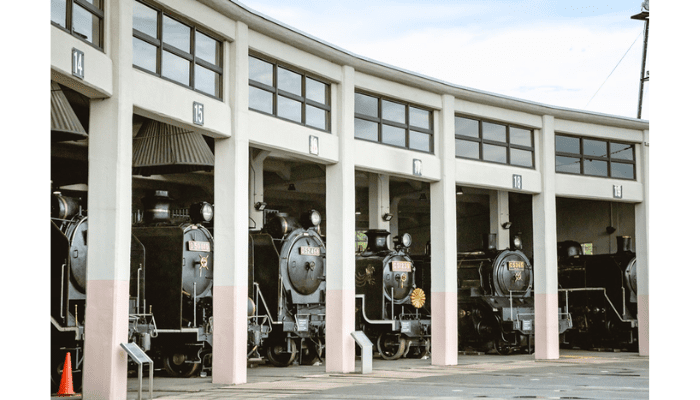
Key Attractions
- Ongata Roundhouse (Important Cultural Property): On the first floor, you’ll find the historic roundhouse, where 20 locomotives are on display. The sight of these steam engines from the Meiji to Showa era lined up is truly impressive.
- SL Plaza: Right next to the roundhouse, you can ride on a steam locomotive that pulls real passenger cars. You can also take photos of the train puffing out black smoke as it moves along.
Other unique exhibits include Japan’s oldest wooden train station building, the Old Nijo Station, which you can only see at this museum.
Great for Families
With a cafe, restaurant, and souvenir shop, Kyoto Railway Museum offers a full day of fun and learning for visitors of all ages.
Kyoto Railway Museum
- Address: Kankijicho, Shimogyo-ku, Kyoto
- Map: Google Maps
- Access:
- 2-minute walk from “Umekoji Park / Kyoto Railway Museum Mae” bus stop (via City Bus 205, 208, or others)
- 20-minute walk from JR Kyoto Station
- Phone: 075-314-2996
- Holidays: Closed on Wednesdays and New Year’s holidays
- Hours: 10:00 AM – 5:00 PM (last admission at 4:30 PM)
- Admission:
- Adults: ¥1,500
- University/High School students: ¥1,300
- Elementary/Middle School students: ¥500
- Preschoolers (age 3+): ¥200
- Official Website: Kyoto Railway Museum
8. Sanjusangendo

Located just a 1-minute walk from the “Hakubutsukan Sanjusangendo-mae” bus stop (accessible via City Bus 206 or 208 from JR Kyoto Station), Sanjusangendo is a famous Buddhist hall that houses 1,001 statues of Buddha.
The hall’s full name is Rengeoin Sanjusangendo, and it displays the National Treasure “Wooden Thousand-Armed Kannon Statue” (Senju Kannon).

Discover the 1,001 Buddha Statues
The statues are arranged in rows, and it’s said that among them, you may find a Buddha statue that resembles someone you know or even yourself. Photography is not allowed inside, so be sure to visit and take in the breathtaking sight of the 1,001 statues.
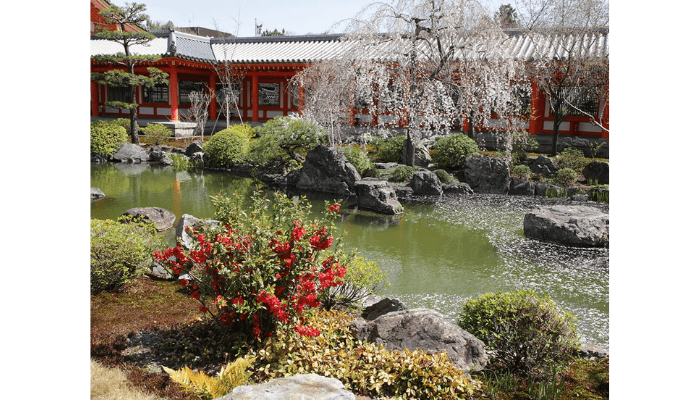
Beautiful Garden and Other Highlights
While the main focus of Sanjusangendo is the hall itself, there are other attractions on the grounds. The Japanese garden, designed by the famous Kyoto gardener Kaneko Kinroku in 1961, is a peaceful spot to relax and enjoy the changing seasons.
The garden paths are wheelchair accessible, making it easy for visitors of all ages and abilities to explore.
You’ll also find the “Yonaki Jizo” (Night Crying Jizo) statue, which is believed to bring relief to children who cry at night when prayed to.
Sanjusangendo
- Address: 657 Sanjusangendo-mae-cho, Higashiyama-ku, Kyoto
- Map: Google Maps
- Access:
- 1-minute walk from “Hakubutsukan Sanjusangendo-mae” bus stop (via City Bus 206 or 208)
- 20-minute bus ride from JR Kyoto Station
- Phone: 075-561-3334
- Closed: Open year-round
- Hours: 8:00 AM – 5:00 PM (9:00 AM – 4:00 PM from November 16 to March)
- Admission:
- Adults: ¥600
- High School and Middle School Students: ¥400
- Children: ¥300
- Official Website: Sanjusangendo
9. Kyoto National Museum

The Kyoto National Museum is located just a 15-minute walk from JR Kyoto Station and 12 minutes from Higashi Honganji Temple, making it easy to visit during your stay in Kyoto. It is also right next to Sanjusangendo, so it’s a great addition to your sightseeing itinerary.
This large museum showcases cultural heritage from the Heian to Edo periods, focusing on the rich history of Kyoto when it became Japan’s capital.
Permanent and Special Exhibitions
In addition to its permanent displays, the museum hosts special exhibitions two to four times a year. Depending on when you visit, you can experience different exhibitions.
One of the museum’s highlights is the Meiji Koto-kan, which is used for special exhibits and is designated as an Important Cultural Property. The brick building itself is a perfect spot for photos.
Kyoto National Museum
- Address: 527 Chayamachi, Higashiyama Ward, Kyoto
- Map: Google Maps
- Access:
- 15-minute walk from JR Kyoto Station
- A short walk from the “Hakubutsukan Sanjusangendo-mae” bus stop
- Phone: 075-525-2473
- Closed: Mondays and New Year’s holidays (if Monday is a public holiday, the museum will be closed the following Tuesday)
- Hours: 9:30 AM – 5:00 PM (Last entry at 4:30 PM)
Note: Special exhibition hours may vary - Admission: Varies by exhibition
- Official Website: Kyoto National Museum
10. Kyoto Ramen Koji
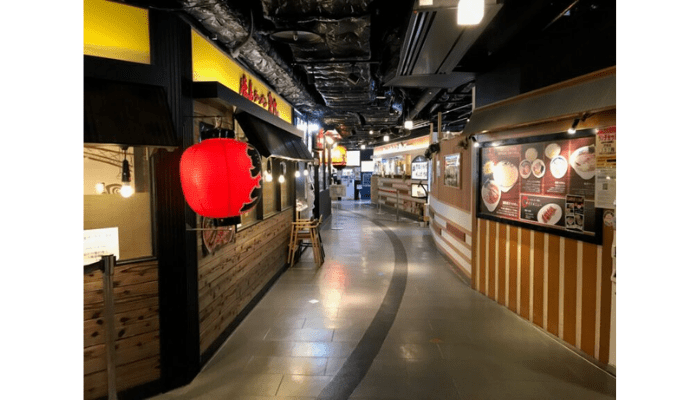
Located on the 11th floor of Kyoto Station Building, just a 2-minute walk from JR Kyoto Station, Kyoto Ramen Koji is a food hall that brings together famous ramen shops from all over Japan.
The interior is designed with traditional Kyoto elements like stone gardens and lattice ceilings, creating a relaxing atmosphere for visitors to enjoy.
Enjoy Ramen from Across Japan
There are 10 shops offering ramen from various regions, including Hokkaido in the north and Hakata in the south. You can also try matcha-flavored sweets at the cafe Chasen.
During lunch and dinner times, there can be long lines, so it’s best to visit outside peak hours.
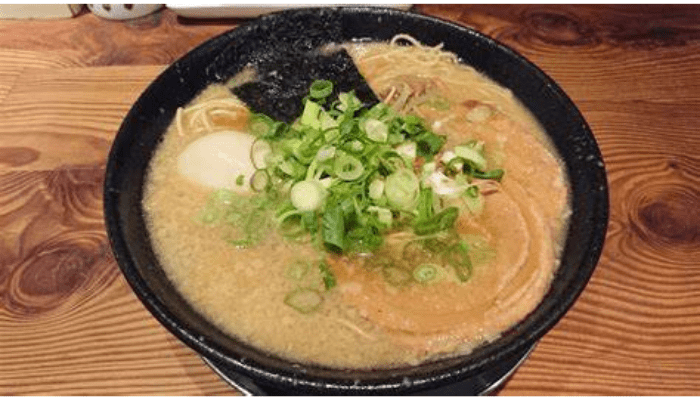
Ramen Highlights
- Masutani: Established in 1948, this shop is famous for its back fat soy sauce ramen. The soup is made with a chicken base, rich soy sauce, and a generous amount of back fat, which combines for a light yet rich flavor. The thin noodles absorb the soup perfectly.
- Taishoken: A famous ramen shop from Ikebukuro, Tokyo, is now available in Kyoto for the first time.
- Menkaya Iroha: Known for its black soy sauce, this shop brings the flavor of Toyama ramen to Kyoto.
Kyoto Ramen Koji
- Address: 901 Higashishio Kojicho, Shimogyo Ward, Kyoto Station Building, 10th floor
- Map: Google Maps
- Access: 2-minute walk from JR Kyoto Station
- Phone: Varies by shop
- Closed: Open daily (Some shops may close temporarily)
- Hours: 11:00 AM – 10:00 PM (Last orders at 9:30 PM)
- Budget: ¥1,000–¥1,999
- Official Website: Kyoto Ramen Koji
11.Kyoto Station Building Skywalk
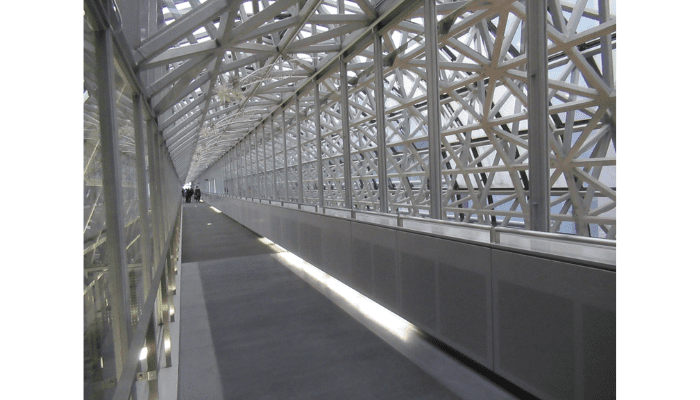
The Kyoto Station Building Skywalk is a 470-meter long passage inside Kyoto Station. Along the way, there are three viewing spots where you can enjoy panoramic views of the city.
A Stunning View by Day and Night
During the day, you can enjoy clear views of the city, while at night, the streets light up, offering a different and magical atmosphere.
Unlike the Kyoto Tower which requires an entrance fee, the Skywalk is free to access, making it a great option for visitors.
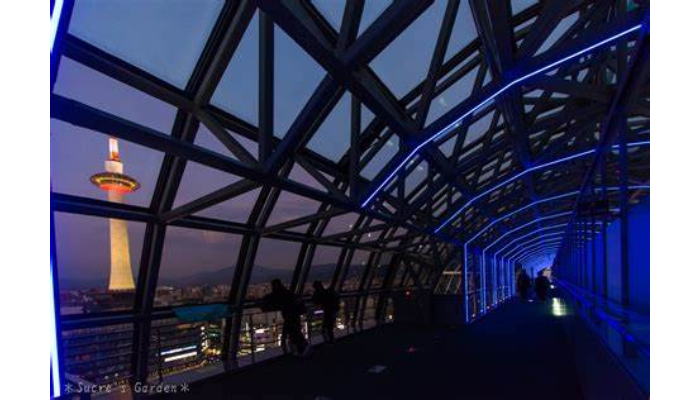
Nighttime Lights
The Skywalk itself is lit up from 5:00 PM onward. When I visited around 6:00 PM, the walkway was beautifully illuminated, with colors changing to create a stunning effect. I highly recommend visiting between 5:00 PM and 10:00 PM if you’re in the area.
Since the Skywalk is located close to Kyoto Ramen Koji, it’s a great place to visit before or after enjoying some ramen.
Kyoto Station Building Skywalk
- Location: 7th Floor, JR Kyoto Station
- Map: Google Maps
- Access: Located inside Kyoto Station
- Phone: 075-361-4401
- Closed: Open every day
- Hours: 10:00 AM – 10:00 PM
- Fee: Free
- Official Website: Kyoto Station Building Skywalk
12. Umekoji Park

Umekoji Park is a large park located near Umekoji Kyoto Nishi Station.
The park features grassy fields, a river play area, a plaza at the Shichijo entrance, a paid Japanese garden called “Suzaku-no-niwa,” as well as restaurants and rest areas. It’s not just big; it offers many different activities for visitors.
Seasonal Beauty
The park changes with the seasons. In spring, you can see beautiful cherry blossoms; in summer, enjoy fresh greenery; in autumn, the park is filled with colorful leaves; and in winter, the Suzaku-no-niwa garden becomes a picturesque snowy scene.
I visited in both spring and autumn. In spring, the cherry blossoms were in full bloom, and in autumn, the Suzaku-no-niwa garden was covered in stunning red leaves.

A Local Gathering Spot
The park is also a popular spot for locals to relax. On weekends, there is a bazaar, making it a lively place for people to gather.
There are benches throughout the park, making it a great place to take a break during sightseeing.
Many families enjoy picnics here as well. On weekends, there’s even a train (Chin Chin Densha) that visitors can ride.
Additionally, Kyoto Aquarium is located within the park, so you can visit both the park and the aquarium in one trip.

Autumn Highlights: “Momiji Festival”
During the autumn fall foliage season, the “Suzaku-no-niwa” garden hosts a Momiji Festival to celebrate Kyoto’s 1,200th anniversary. The garden requires an entrance fee of 400 yen for adults.
The garden is beautifully lit up at night, starting in mid-November. The maple trees around the garden are illuminated, with around 150 trees glowing in vibrant colors.
One of the highlights is the reverse reflection of the colorful leaves in the central pond, creating a beautiful mirror image.
While Kyoto’s major autumn spots can get crowded, Suzaku-no-niwa remains a hidden gem. It’s not as busy as other places, so it’s a great spot to take photos of the beautiful foliage without the crowds.
Umekoji Park
- Location: 56-3 Kanki-ji-cho, Shimogyo-ku, Kyoto
- Map: Google Maps
- Access: 3-minute walk from Umekoji Kyoto Nishi Station, 20-minute walk from the Karasuma Central Exit of Kyoto Station
- Phone: 075-352-2500
- Closed: Every Monday (or the following day if it’s a holiday), New Year’s holiday (12/28–1/4)
- Hours: 9:00 AM – 5:00 PM (last entry at 4:30 PM)
- Fee: 200 yen for Suzaku-no-niwa and “Inochi-no-mori” garden
- Official Website: Umekoji Park
13. Toyokuni Shrine
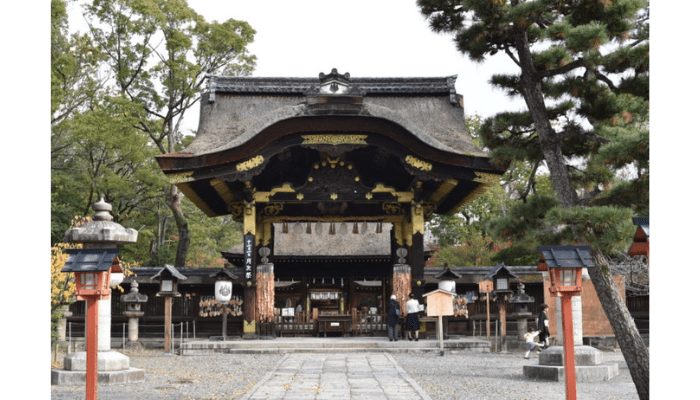
Toyokuni Shrine is dedicated to Toyotomi Hideyoshi, one of Japan’s most famous samurai leaders from the Sengoku period.
The shrine was originally destroyed after the fall of the Toyotomi family, under the orders of Tokugawa Ieyasu. However, it was later rebuilt in the Meiji era, following the decree of Emperor Meiji. The current shrine building was established in 1880, though the karamon gate, a beautiful example of traditional Japanese architecture, is an original structure from Fushimi Castle.
In addition to the Kyoto shrine, there are three other Toyokuni Shrines located in places tied to Hideyoshi’s life: Osaka, where his castle was, Nagoya, where he was born, and Nagahama, where he rose to power.
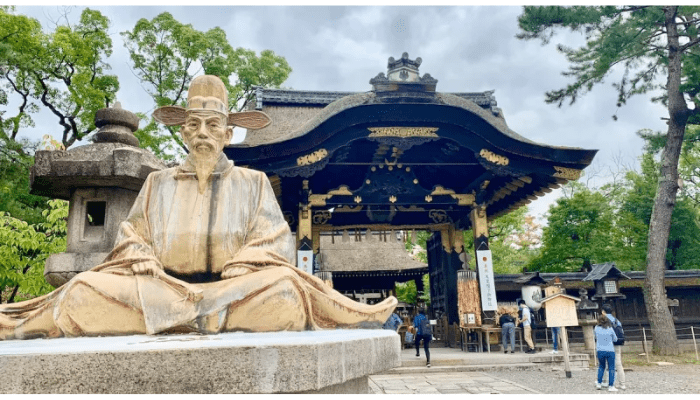
Highlights of Toyokuni Shrine
One of the main attractions at the Kyoto Toyokuni Shrine is its Treasures Hall. Here, visitors can see many important artifacts related to Toyotomi Hideyoshi, including the National Treasure Karamon gate. There are also items connected to Hideyoshi, such as charms and goshuin (temple stamps), which are popular among visitors.
The shrine itself is free to visit, but the Treasures Hall charges an entrance fee of 300 yen for adults.
I visited in early April during the busy tourist season, but the shrine wasn’t as crowded as other popular spots in Kyoto, creating a peaceful atmosphere. It’s a great place for visitors who want to explore at a more relaxed pace.
Toyokuni Shrine
- Location: 530, Yamato-Oji Street, Higashiyama Ward, Kyoto
- Map: Google Maps
- Access: 8-minute walk from Shichijo Station, 5-minute walk from Sanju-Sangendo Museum, 15-minute walk from JR Kyoto Station
- Phone: 075-561-3802
- Closed: None
- Hours: Treasures Hall open from 9:00 AM to 5:00 PM (last entry at 4:30 PM)
- Fees: Free entry to the shrine
- Treasures Hall Admission:
- Adults: 300 yen
- High School/College Students: 200 yen
- Elementary/Junior High School Students: 100 yen
- Group Rates (30 or more):
- Adults: 240 yen
- High School/College Students: 160 yen
- Elementary/Junior High School Students: 80 yen
- Treasures Hall Admission:
- Official Website: Toyokuni Shrine
14. To-ji Temple

To-ji Temple is located in the Minami district of Kyoto, and it has a history that dates back to the Heian period, making it over 1,200 years old. This historical temple is a UNESCO World Heritage Site, adding to its cultural significance.
I visited To-ji in early April during cherry blossom season, and I had the chance to explore it both during the day and at night.

What to See at To-ji Temple
The Five-Story Pagoda is one of the most impressive sights in the temple. It stands tall and majestic, and it is especially stunning when framed by cherry blossoms in full bloom. The view of the pagoda with the pink flowers is perfect for photos.
During the cherry blossom season, there is a 1,000 yen entrance fee for the paid areas, which include a garden where you can enjoy the beautiful nighttime cherry blossoms. When I visited, the blossoms were in full bloom, creating a magical atmosphere. The sight of the Five-Story Pagoda surrounded by night-time cherry blossoms is truly breathtaking.
Be sure to get up close to the pagoda and capture the best photos of this incredible view!

Other Highlights at To-ji
Near the pagoda, you’ll find a large pond called Hyotan Pond, which is part of the temple’s strolling garden. In spring, the pond is beautifully lit up, and the cherry blossoms reflect beautifully on the water’s surface.
Both the Five-Story Pagoda and Hyotan Pond are perfect photo spots, so don’t miss them!
To-ji offers a different view at night compared to during the day, so I highly recommend visiting at different times to experience both.
The temple is also beautiful in different seasons: enjoy cherry blossoms in spring, lotus flowers and fresh greenery in summer, and colorful autumn leaves in fall.
To-ji Temple
- Address: 1 Kujo-cho, Minami Ward, Kyoto
- Map: Google Maps
- Access: 10-minute walk from Kintetsu To-ji Station
- Phone Number: +81 75-691-3325
- Open: Every day
- Opening Hours:
- Main Gate: 5:00 AM – 5:00 PM
- Golden Hall & Lecture Hall: 8:00 AM – 5:00 PM (last entry at 4:30 PM)
- Treasures Museum & Kanchiin Temple: 9:00 AM – 5:00 PM (last entry at 4:30 PM)
- Special Night Viewing: 6:00 PM – 9:30 PM (last entry at 9:00 PM)
- Entry Fees:
- Free: Main Gate, Lecture Hall, and Dining Hall
- Golden Hall, Lecture Hall, Five-Story Pagoda:
- Adults: 800 yen
- High school students: 700 yen
- Middle school students and younger: 500 yen
- Night Viewing:
- Adults: 1,000 yen
- Middle school students and younger: 500 yen
Note: No photography allowed inside the Golden Hall and Lecture Hall.
- Official Website: To-ji Temple
15. Rokusonno Shrine
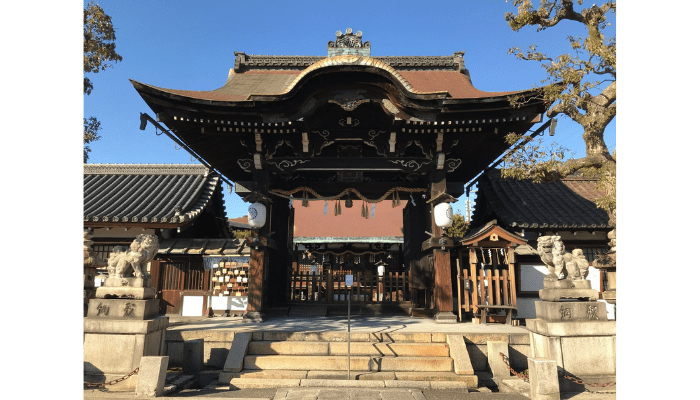
Rokusonno Shrine is dedicated to Minamoto no Yoritomo, a famous member of the Minamoto clan, and it is a shrine with strong ties to the Genji family. It is part of the Three Genji Shrines, along with Tada Shrine in Kawanishi, Hyogo, and Tsuboi Hachiman Shrine in Habikino, Osaka.
As one of Kyoto’s ancient shrines, Rokusonno Shrine is also part of the Kyoto 16 Shrine Stamp Tour.
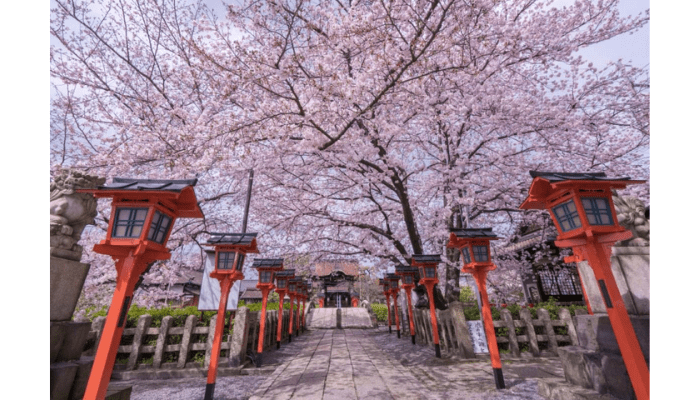
What to See at Rokusonno Shrine
During cherry blossom season, the shrine grounds bloom with various types of cherry trees. Not only will you find popular varieties like Somei Yoshino and weeping cherry trees, but you can also enjoy rarer blossoms like Ukonsakura (a yellow cherry) and Gyoikou, a special kind of yaezakura (double-flowered cherry).
The best part is, these blossoms are free to see, and because the shrine is less crowded than other locations, it’s easy to take beautiful photos.
Additionally, the shrine offers a hidden gem: you can capture beautiful shots of the cherry blossoms with the Shinkansen (bullet train) passing in the background. If you visit between late March and early April, when the cherry blossoms are in full bloom, you’ll have a chance to take these amazing photos.

The “Bridge of Love”
At the center of the shrine grounds, you’ll find a taiko bridge called the “Bridge of Love” (恋の架け橋). This bridge has recently become a popular power spot because it is believed to help people fulfill their wishes for good relationships.
Legend says that crossing the bridge while wishing for a good relationship will make that wish come true. If you visit Rokusonno Shrine, be sure to walk across the bridge and make your wish!

Visiting Rokusonno Shrine
Rokusonno Shrine is located just a 10-minute walk from Kyoto Station, and nearby is Ume Kōji Park, another great spot for relaxation. While the shrine grounds are not very large, they offer a peaceful environment perfect for enjoying a slow-paced visit.
Rokusonno Shrine
- Address: Mibu-dori Hachijo-kado, Minami Ward, Kyoto
- Map: Google Maps
- Access:
- 13-minute walk from JR Kyoto Station, Kintetsu Kyoto Line, or Karasuma Subway Line (Kyoto Station)
- 1-minute walk from the Rokusonno Shrine-mae bus stop (City Bus #17)
- Phone Number: +81 75-691-0310
- Open: Every day
- Opening Hours: 9:00 AM – 5:00 PM
- Entry Fee: Free
- Official Website: Rokusonno Shrine
Here are some popular tourist spots around JR Kyoto Station.
Kyoto is known for its small alleyways, each with its own name, so even if you’re visiting for the first time, it’s easy to navigate with a map.
This guide focuses on places within walking distance from the station, ranging from well-known landmarks to hidden gems.
Be sure to check out the Kyoto Tower, which offers a great view of the entire city, and visit Sanjusangendo, home to 1,001 statues of Buddha—unique attractions you can only experience in Kyoto!
▼ Related Articles for Kyoto Sightseeing
